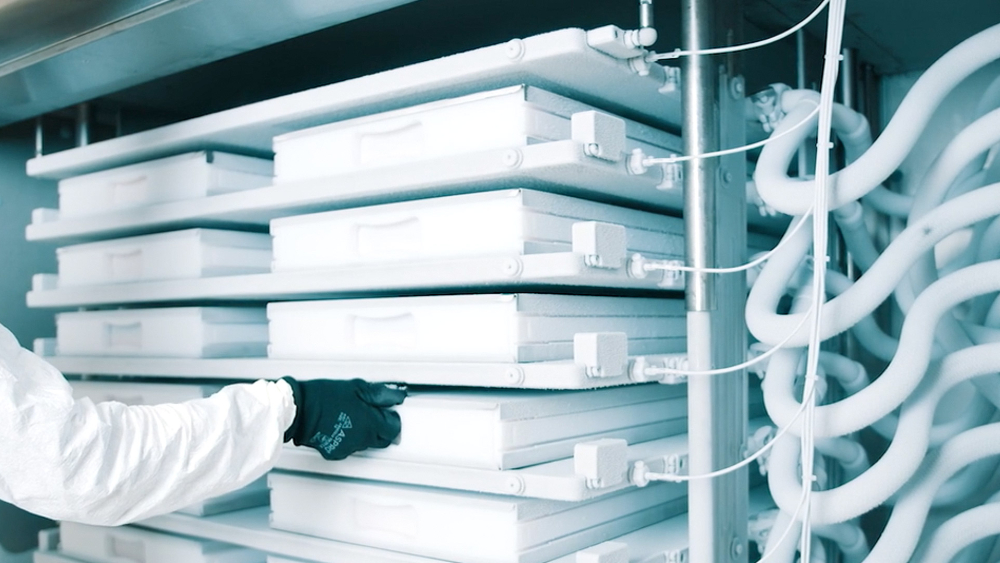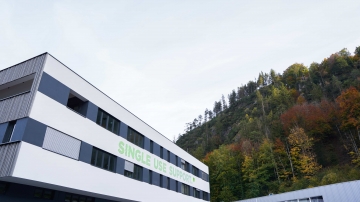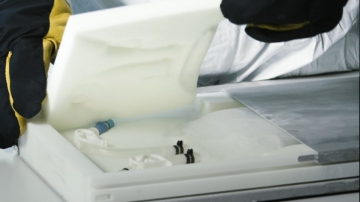Sustainable Freezing in Biopharma: An Exploration of Natural Gas Usage
Table of contents
ShowIn the biopharmaceutical sector, the utilization of F-Gases, also known as fluorinated greenhouse gases, is on a decline. However, the need for cryopreservation of drug substances will remain. In order to contribute to a more environmentally friendly freezing of drugs, more sustainable technologies need to be developed and applied. But is sustainable freezing even possible?
Regulatory frameworks, exemplified by the EU Regulation 842/2006, are assuming greater significance as they align with the overarching objective of curbing emissions arising from F-Gases. Consequently, the industry is witnessing a growing adoption of natural gases. This transition is evident at Single Use Support, where their cutting-edge ultra-low temperature storage platform RoSS.ULTF is exclusively offered with natural gas.
What are the challenges of this shift to natural gas powered refrigeration platforms in the pharmaceutical manufacturing arena? And more importantly, how does it support the principles of green engineering? Alexander Fuchs, Senior Teamlead Product Line Management at Single Use Support, sheds light on these aspects.
What natural gases are used and what role do they play in Biopharma freezers?
Alexander Fuchs: We furnish both our plate-based freeze and thaw platforms along with our ultra-low temperature storage freezers with natural gases. R170 ethane, R1150 ethylene, R290 propane and R1270 propylene are natural gases that are used not only by Single Use Support but also by several other solution providers. The EU regulation outlines a gradual 70% reduction in F-Gas emissions by 2030, aiming to mitigate global warming potential (GWP). This now calls upon manufacturers and solution providers to transition to sustainable alternatives. Non-compliance with the F-Gas Regulation beyond 2030 could entail penalties, underscoring the urgency to meet sustainability targets. Even though solutions with F-Gas cannot be placed on the market after 2030, they can still be used with the requirement of shortened maintenance intervals the greater the amount of F-Gas used.
While freezing equipment performing below -50°C (-58°F) is exempt from these regulations until 2030, Single Use Support and its customers already now embrace the trend toward eco-friendly solutions. Even as we offer solutions like the RoSS.pFTU plate freezer for controlled freezing from ambient temperature to -80°C (-112°F) and the RoSS.ULTF for ultra-cold storage down to -80°C, both equipped with natural gases.

What are the big advantages of using natural gases?
Alexander Fuchs: Foremost, natural gases are not scarce and are more readily available than fossil fuels. The incorporation of natural gases into a manufacturing suite doesn't necessitate a complete overhaul, as these processes can be smoothly assimilated into the biopharmaceutical cold chain storage. Moreover, natural gases boast enhanced efficiency in comparison to F-Gases. This translates to a reduced charge requirement, about 1/6th of what was previously needed with F-gases for our RoSS.ULTF, achieving equivalent performance outcomes.

So why hasn't natural gas always been the omnipresent choice?
Alexander Fuchs: Natural gas is more flammable. The combustibility of natural gas poses a safety concern in the biomanufacturing environment. As mentioned earlier, as long as the charge of natural gases remains under 150g per platform solution, there's no impact on safety protocols. But exceeding this threshold triggers a cascade of measures, including a complete ATEX infrastructure overhaul and gas tracking device installations.
Notwithstanding, the freezing performance remains unwavering. Switching to R170 ethane or R290 propane, for example, doesn't compromise cooling efficiency or reliability. Once safety requisites are met, users experience no discernible change.
How do natural gases pave the way to Green Engineering and sustainable biopharma practices?
Alexander Fuchs: Compelled by the binding nature of the F-Gases regulation, both manufacturers and solution providers are forced to chart a course towards sustainability. Therefore, it is great to have such initiatives and guidelines in place to collaboratively reduce emissions and subsequently GWP. The mounting emphasis on natural gas employment contributes to Green Engineering by encompassing life cycle thinking in all engineering endeavors. This entails minimizing resource depletion, waste generation, and optimizing energy inputs and outputs for utmost safety and eco-friendliness.

The use of natural gases is, after all, a step towards a more sustainable biomanufacturing environment.
Alexander FuchsHowever, it's imperative to view this as only one step toward a more sustainable biomanufacturing environment. It lays the foundation for subsequent engineering innovations and solutions aimed at refining current technologies and achieving holistic sustainability. CO2, for example, could be a very promising refrigerant for the future - even though it cannot be used for ultra-cold conditions to -80°C. As an environmentally compatible temperature control solution carbon dioxide does not have ozone depletion potential and has a very low GWP.
Is sustainable freezing even possible now?
Going back to the initial question of whether freezing can become more sustainable, the answer is “yes, but”:
Yes, there are regulations guiding the industry towards adopting more sustainable technologies.
Yes, there is energy and drive from life science solution providers to develop more sustainable systems. And yes, relying on natural gas and natural refrigerants is a good way to reduce emissions and global warming potential.
But there is still a lot of work to be done, and we, the entire industry, need to follow the green path – beyond the use of natural gas. Like other innovators, Single Use Support will continue to work with customers to find individual solutions. After all, innovation will shape the future of sustainability.









